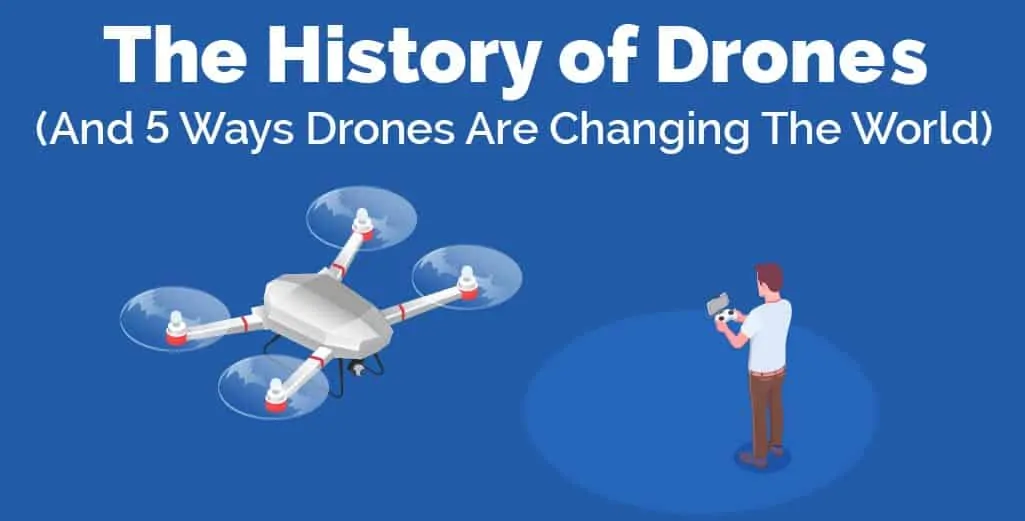
When talking about space and air travel, the word ‘drone’ means an unpiloted air or spacecraft. Or simply: an unmanned vehicle that travels through the air.
This is exactly what a drone as we know it is, and they have been used for years under the military’s control.
They were used to ensure that no pilot was harmed when traveling over combat zones. Cameras were also implemented so that the military could spy on the opposition without being caught with a massive vehicle.
Nowadays, drones are becoming more accessible and widespread. We all heard about the rogue drone that canceled hundreds of flights at a UK-based airport, so we know that they are also not without their risks.
Having said that, many people are using their drones for good and enriching their lives with them. The ever-growing technological enhancements make us believe that the only way for drones is up, and we’ve found five ways that they’re changing the world today.
Below, we’ll be taking a look into the history of drones and their original purpose, as well as the five ways that drones are changing the world. Sit back, grab a drink, and get ready to learn more about drone technology than you ever thought was possible.
Table of Contents
- 1 What Is A Drone?
- 2 The History Of Drones
- 3 The Future Of Drones
- 4 5 Ways Drones Are Changing the World In 2020
- 5 History Of Drones: Summary
What Is A Drone?
Drones, or Unmanned Aerial Vehicles (UAVs), are small vehicles that can travel through the air without drawing much attention to themselves.
Although they are vehicles, they are only large enough to carry a camera, not a human being, so don’t get too excited about the possibility of acquiring your own private jet.
Drones are robotic vehicles that can be used for a number of purposes such as finding missing people after a freak accident to filming a wide shot for a Hollywood film.
There are more mundane tasks that drones can carry out as well, such as delivering groceries and recording home videos.
Originally created to serve in the military, the history of drones is a long one which we will get into soon.
The top drones with cameras can travel to great heights and for great distances, even with the additional weight, depending on the quality and model of drone. Close-range drones are more accessible to hobbyists and can travel up to 30 miles away.
Short-range drones can reach up to 90 miles and mid-range drones can travel up to 400 miles away.
Endurance UAVs can travel even further than 400 miles and up to 3,000 feet in height. The different ranges of drones make them better for different purposes depending on their mission.
Drones are remote-controlled by the owner, meaning that the controller can remain safely on the ground while the UAV does all the hard work for them.
If the mission is more dangerous than carrying groceries around, the owner of the drone can remain in a safe space while the drone risks its life for them.
As you can see, drones are very useful pieces of technology that can be used for a number of situations.
Drones have now been manufactured for over a century and there seem to be no signs of slowing down on the research and development. So, without further ado, let’s take a look into how UAVs came about in the first place.
The History Of Drones
Finding yourself reading this article probably means that you’ve become invested in the world of drones and want to know more about them. There are plenty of articles telling you about the new developments for drones, but what about everything that has happened before now?
Below we’ll be taking an in-depth look into the history of drones, not just looking at them from a hobbyist’s viewpoint. The first drone was created just shy of 160 years ago, so there is a lot to unpack here. Let’s get started.
Austrian Soldier Attack Venice

We have been focusing on the robot-esque drones that are made from electronic technology, but the history of drones actually shows us that the first UAV was a balloon carrying a bomb over a country. In 1849, Austrian soldiers launched an attack on Venice without having to travel anywhere near the casualty site.
The soldiers released balloons carrying around a 30-pound bomb each. The Republic of Venice had been independent for over a millennium before Napoleon conquered it in 1797. The same leader then took Austria just one year later.
A revolution declared Venice to be a republic again in 1847, which distressed the Austrians greatly. The only way that they could think of to retaliate was to cause starvation, hunger, and disease all throughout Venice. But they didn’t stop there.
A young lieutenant called Franz von Uchatius can be thought of as the mastermind behind the first UAV, as it was his idea to launch the bomb-wielding balloons in July of 1849. However, the Austrians’ first attempt failed due to the wrong-facing wind.
The first attempt saw the balloons rise around 4,500 feet off the ground and explode in midair still on Austrian soil. This proved to be rather embarrassing for the Austrians, not helped by the Venetians clapping and hollering once they saw the smoke rising from the explosions.
Just two months later, on the 22nd of August of the same year, the second round of balloons was released. There were around 200 balloons and the bombs had half an hour fuses, so they were lit and sent on their way.
There was little physical damage done by this attack, but the psychological impact was too much for the Venetians and they surrendered only two days later. This is the first ever account of a UAV being used.
Early Flight
The attack on Venice was certainly effective even though it caused very little physical damage. However, some of the balloons floated back over to Austria before being detonated which caused similar trauma for the attackers as well.
For this reason, and the fact that a lot of bombs were wasted in the making of the attack, the balloon bombs were not adopted as a standard fighting technique.
However, the invention of the winged aircraft was a game-changer for drones and the military. The Wright Brothers were the inventors of the airplane. Their first vehicle was called the Wright Flyer and it was the first successful aircraft to fly and land safely.
The brothers flew their aircraft four times on the 17th December 1903 near Kitty Hawk, which is why you might also know this vehicle to be called the Kitty Hawk aircraft.
But you might be wondering what all this has to do with drones, as the Kitty Hawk aircraft was a manned flying vehicle. Well, it all started with the first airplane – it was this that gave Great Britain the idea to invent the first UAV with wings.
Ruston Proctor Aerial Target
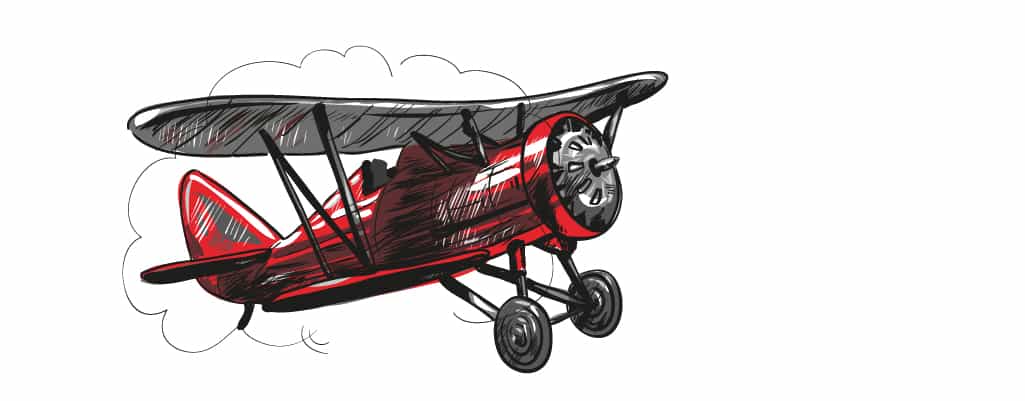
In 1916, Great Britain had created the first successful unmanned aircraft and named it the Ruston Proctor Aerial Target. It was considered to be a groundbreaking discovery and developed off of the drawings from Nikola Tesla.
A radio control system controlled the Ruston Proctor Aerial Target wa, making it rather similar to the drones that are seen today.
Of course, the controls are now more compact and safer to use, but it’s interesting to note that the main science behind the drone has not changed over the past century.
Britain wanted to use the Ruston Proctor Aerial Target as a bomb to target the Zeppelins which were traveling over relentlessly from Germany. However, they also thought that it might be possible to use the UAV to target the opposition on the ground as well.
The British military took the prototypes and plans for the Ruston Proctor Aerial Target under their wing and tried to make it work through several attempts.
However, each of the models failed them in some way or another, causing them to give up on the drone altogether to preserve their supplies.
We bet that they were kicking themselves once they heard the news that America had invented an alternative to their project – and it was successful.
Hewitt-Sperry Automatic Airplane
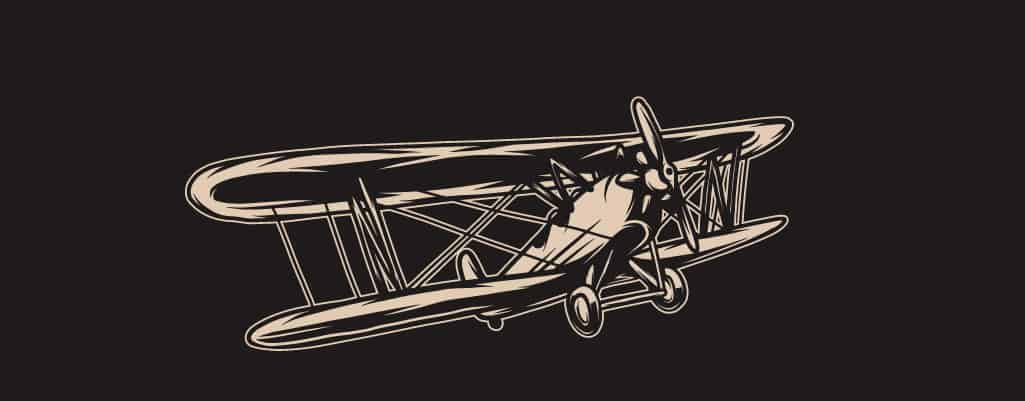
America’s version of the Ruston Proctor Aerial Target was called the Hewitt-Sperry Automatic Airplane, otherwise known as the Flying Bomb or the Aerial Torpedo. They created this aircraft in 1917, just one year after Britain’s failed attempts were scrapped.
The Hewitt-Sperry Automatic Airplane impressed the US army so much that they immediately called for a better version to be created so that they could use it in battle.
The Hewitt-Sperry Automatic Airplane had a great test run, but it was never implemented into the war to declare a winner.
The Kettering Bug

The improved version of the Hewitt-Sperry Automatic Airplane made by Americans was called the Kettering Bug. It was released and able to be used in 1918, and anyone who got a chance to view it marveled at the technological advancement sitting in front of them.
However, the Kettering Bug took too long to finalize and was only ready to use after World War I had ended. The test flights were also a little risky as well, as officials worried that the unreliable explosive material could be set off over their allies.
By the time the war had ended on the 11th of November 1918, there were 45 Kettering Bugs made and stored away somewhere in America. This technology was not made public for everyone to learn about; however, until World War II – over 20 years later.
Modern History Of Military Drones
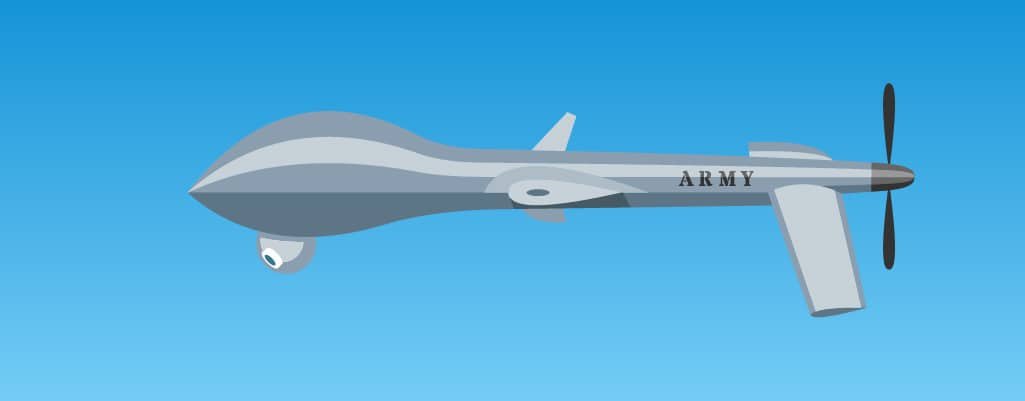
The hope that the Kettering Bug had sparked carried on throughout World War II and more people were striving for better developments in the market for unarmed aircraft vehicles.
It was a race against time to see who could create the best successful UAV first, and America had a large advantage over everyone else.
World War II saw a lot of advancements in the world of technology, which really helped the accessibility of drones for military use.
These advancements extended throughout the Cold War as well. However, the UAVs were overpowered by the impressive inventions of the SR-71 Blackbird and the Flying Fortress.
The SR-71 Blackbird was a manned aircraft that could travel higher and further than any other airplane of that date. It was designed and created without any other countries knowing about it in America, and the maximum height of it allowed it to be somewhat undetected in motion.
The SR-17 Blackbird still remains the plane with the highest altitude for a horizontal flight, as well as the fastest plane without rocket-powered engines. There is a reason why this aircraft is still praised and viewed to this day.
The Flying Fortress was designed and created in less than 12 months and answered the military’s request for a multi-engine bomber aircraft.
It had multiple machine guns mounted as well as space to carry and drop bombs, making it an invaluable piece of machinery during the war. The first Flying Fortress was used in combat in 1941.
As you can see, these two examples of aircraft created during World War II and the Cold War were undoubtedly more sought after than small unmanned vehicles that could only carry smaller bombs with them.
Having said that, it was well-known that both the USSR and America used their drones to spy on each other’s sides without becoming undetected during the 45 long years that were occupied by the Cold War.
However, the reports that were written on the findings are still not available to the public and it is often seen that leaked information contradicts itself.
Israel’s Attack On Syria
So, until now we’ve seen the use of drones be sparingly at best. There have been a lot of prototypes, failed missions, and development. The most action that we’ve seen is when the US and USSR sat around for decades spying on each other to see what they would do next.
That all changed, though, when in 1982 Israel used military-grade UAVs as well as manned aircraft to bomb the Syrian team.
The drones were used to fail Syrian communications, they were flown ahead of the manned vehicles to take the attention away from them, and the drones also helped to ensure that Israel knew exactly where the enemy was positioned.
While UAVs had been around for decades by then, Israel was the first military to be able to mimic the use of drones and use them to their advantage, severely aid their mission.
Once the rest of the world saw this monumental discovery take place, every country was once again interested in building their own army of drones.
America spent missions of dollars on drones and contracts just two years after they’d watched Israel’s success, and the rest of the world was not far behind them.
The number one problem that most countries were doing before Israel taught them differently was that they were trying to make drones physical weapons with bombs.
However, this is not what drones have proved best at – they actually serve the military better by being the eyes of the team.
Nowadays, UAVs are still often used in military missions, but they’re used as either surveillance equipment to scan for enemies in different positions or to take pictures of targets before flying the information back to the base.
Military drones are sometimes controlled by a soldier, but one of the most useful features of modern drones for the military is that they can be put on autopilot and fly themselves around.
This makes them more like a soldier themselves than a mere piece of equipment, and this is what makes them so popular and widely used.
Overall, military spy drones have gone through a lot of trial and error to get to where they are today. Sometimes it pays to have eyes in the sky and missing that simple fact is where armies all over the world went wrong for so many years.
Modern History Of Commercial Drones
Commercial drones are a much newer prospect than military drones, and the Wall Street Journal reports that they only gained commercial popularity in 2006.
Drones began being used for government missions as well as corporation gain, but they were not as groundbreaking as they were in the military.
It began with companies using drones for simple activities such as inspecting pipes and spreading fertilizer on crops.
They were used by government officials to survey areas prone to disasters such as wildfires. While the use of drones was undoubtedly helpful in commercial uses, it didn’t bring as much attention to them as it did while being used in battle.
Drones remained being used for commercial purposes for a decade before hobbyists began to catch on and want a piece of the action for themselves. Having said that, it was not as simple as acquiring a drone and using it for whatever you wanted it for.
The Federal Aviation Administration went through the long process of determining whether drones should be allowed to be used by the public.
Many potential problems arose from the possibility of letting drones out into the world, such as you didn’t know what they wanted one for. If you think about it, drones can be used for multiple illegal purposes.
So, it was down to the Federal Aviation Administration to come up with regulations that would protect the country from people who might have wanted to use their drone for bad rather than mere recreational fun.
From 2006 to 2014, the Federal Aviation Administration only allowed two commercial drone permits per year. They were only given to corporations who requested them and had delivered good reasons for wanting a drone of their own.
However, in 2013 Jeff Bezos, the CEO of Amazon and the richest man in the world according to the Forbes Rich List, shared his plans to use drones for Amazon deliveries. It was this that made the world of drones more widespread and interesting to the public.
Before you knew it, everyone was wanting their own drone, and the Federal Aviation Administration issued 1,000 permits in 2015 alone. In 2016, 3,100 permits were given out and even more the following year.
It has since become somewhat normal for drones to be seen out in public – online influencers have them, drones for children are being sold, and it is incredibly easy to acquire a drone for yourself.
Once the use of drones became so popular, problems began arising and people began to worry about the mass use of these unarmed aircraft.
Safety Concerns Of Recreational Drone Use
Safety
One of the main concerns regarding UAVs is the safety of other larger aircraft that are manned with pilots and multiple passengers. Drones are robots and therefore rely on only the owner to guide them, which can sometimes make it difficult for the controller to see.
While not many recreational drones can reach the height of an airplane, some longer-range ones can and pose a threat to them by getting in their way. It is also a concern that the drone could be flown into traffic, putting people on the ground at risk too.
The safety all comes down to the controller of the drone and how good they are at it. If you let a child fly a long-range drone near a busy highway, you’re putting a lot of people at risk without them even knowing it. A lot of people are not happy with this potential issue.
Security
Drones were first introduced to the world as bomb-carrying machines, so it’s reasonable for people to be concerned about history repeating itself.
Unfortunately, we have seen time and time again that it is possible for people to build bombs at home, and these bombs are very unreliable and dangerous.
They could go off at any moment due to them not being made by professionals, and they are almost always classed as unstable bombs.
If the wrong person were to get their hands on a drone and feel like recreating a scene from World War II, they could cause serious harm to anyone around them.
Privacy
Privacy is definitely the first potential issue that we thought of when considering what could go wrong with giving drones out to the public.
Many drones are equipped to house GoPro cameras, which can record anything for hours. Flying a camera throughout neighborhoods undoubtedly raises some potential issues, right?
Drones are now available for anyone to peer through your windows without you knowing.
Moreover, they can be used to spy on top-secret missions or government agencies. We don’t know about you, but we don’t like the thought of our neighbors being able to stare at us through our windows with a flying robot.
Don’t even get us started on the ‘FAA Modernization and Reform Act of 2012’ which makes it very hard to regulate against, meaning that if you catch someone doing this, you might be met with confused shrugs and a lot of head-scratching from the Federal government.
Nuisance
While drones are interesting to look at and cool to see out and about once, we can envision the popularity of them becoming old quickly for the majority of the public.
Not everyone is as interested in technology as drone hobbyists, and small flying machines might become a big issue. There have already been multiple different occasions where people have shot down drones that were flying over their property.
Drone jammers are available now too. You can use these if you are being bothered by a quadcopter and you are interested in jamming a drone signal to put a stop to it. Just be aware of the legal implications, before you do anything like that.
The Future Of Drones
Now that we’ve got the bad information about drones out of the way, we can move onto more promising topics such as the future of drones.
As we’ve already mentioned, technological advancements are happening every day and the development of drones doesn’t show any signs of stopping.
While it’s impossible to know what’s going to happen in the future, we can say one thing for certain – we haven’t seen the last of drones just yet.
Whether you like it or not, drones are here to stay and there are multiple new start-up companies focused solely on drones emerging onto the market every day.
Consumer Drones
Consumer drones are, of course, going to become more popular as the years go on. Companies such as Altair Aerial are developing budget, beginner-friendly drones with the hope that they will entice more people onto the market.
At the moment, drones are very expensive pieces of equipment, especially night vision drones, which is why you don’t see too many flying around on a daily basis. However, these consumer companies are finding ways to make their drones low-cost so that more people can afford them.
Like with anything; however, a lower cost often comes with a price. We wonder how these companies are achieving lower production costs – are they lower quality, or does the safety of the models become compromised?
EHANG Taxi Service
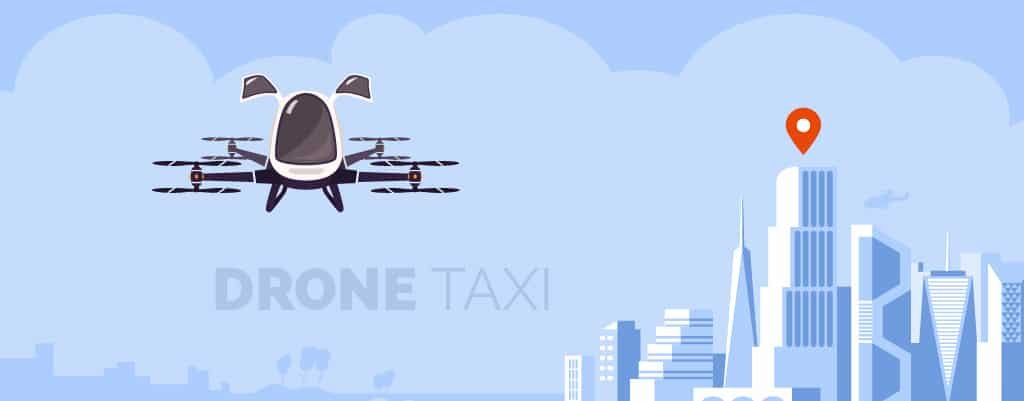
EHANG is a China-based company that has truly taken the development of drones under their wing and created big plans for them.
The business wants to turn their drones into a taxi service, and they have created a drone large enough to carry passengers. There are also other companies that are racing to find a way to allow drones to carry people indoors.
We don’t mean to alarm you, but we all remember what happened in WALL-E, correct? Just saying…
5 Ways Drones Are Changing the World In 2020
Phew, we said that the history of drones was going to be a long one!
Now we’re showcasing five of the most impressive ways that people have been using UAV technology to change the world. Don’t get us wrong, there are more than just five examples to choose from, but these are the selections that impressed us the most.
During our article, we might have placed a bit of doubt into your heads about how people could potentially use drones for not so great practices.
Below; however, we’re aiming to restore your faith in humanity with some heartwarming stories about how drones could impact our lives for the better.
Drone Deliveries
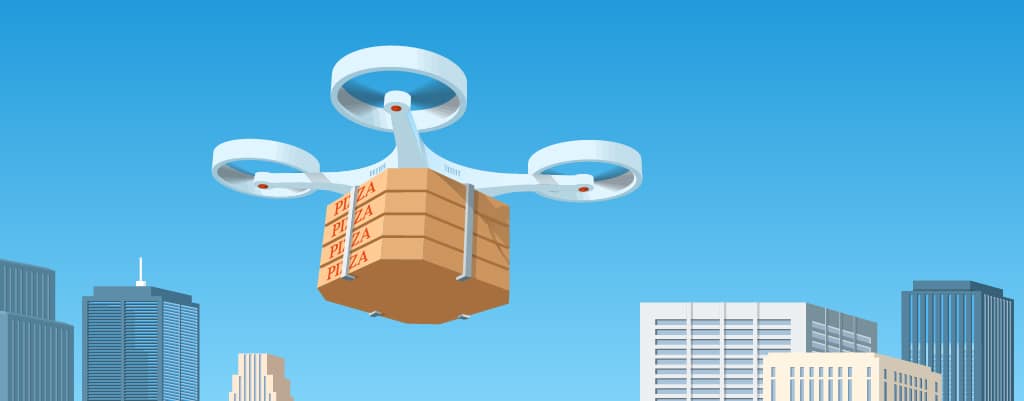
Let’s begin with one that we’ve already touched upon in our article – using drones as a delivery service. In 2019, Wing made its first delivery in Virginia.
Wings is a start-up company from Alphabet and they used the help of FedEx, Walgreens, and a local retailer to make their first delivery a success.
In Australia, Wing also launched a service that delivered fast food, over-the-counter pharmaceuticals, and coffee to homes all around the country. All you had to do was place an order through an app and you would have your food delivered within minutes by a drone.
UPS in America became the first drone airline to be approved by the FFA, allowing them to deliver healthcare essentials to hospital campuses all around the world.
In the future, they also want to expand this mission to become the future of delivering healthcare items around the world.
Amazon has also been very vocal in its plans to unveil Prime Air, a service that can deliver packages within thirty minutes of ordering. There has been plenty of development on this project, but we are yet to have a release date as to when this will be available to the public.
Drone deliveries will make getting items much faster and quicker than delivery drivers, allowing us to obtain items within the same day of purchasing them.
Hospital supplies can also be delivered within minutes, which will hopefully revolutionize the industry and allow more lives to be saved because of it.
Wildlife Preservation
Aircraft faults and crashes are the number one killer of Wildlife Biologists around the world. When flying low enough to get a good look at different species on the ground was the most common time that their aircrafts delivered them to their fatal demise.
For example, in a study taken between 1937 and 2000, it was shown that 91 biologists were killed in the field (presumably amongst dangerous species) and 60 were killed in aircraft crashes.
These numbers are incredibly close, and drones offer a safer way for biologists to observe the different animals in the wild.
Wildlife biologists use drones with cameras attached to view and monitor the animals. They can reach small and tight spaces which previously wouldn’t have been possible to view.
We now know much more about wildlife than we did before because of the clever use of drones. Drones are also smaller and quieter than manned aircraft, which can prevent the animal from becoming distressed when a large vehicle is flying overhead.
An interesting development is that now wildlife experts are considering using drones to catch illegal poachers.
Doing so could rightfully put criminals in their place and preserve near-extinct species. This pleases many wildlife lovers and will hopefully deter poachers from enjoying their illegal activities.
If not; however, at least there will be more evidence on them so that they can be fined or sentenced. As you can see, drones are changing the world by preserving wildlife. The more drones used, the more likely we are to be able to save more species from extinction.
Robot Bees

Bees are quickly becoming extinct due to their loss of habitat, harmful parasites to the insects, and cell phone airwaves.
There is a reason why a lot of people are on the fence about the new 5G cell phone data. “But what’s the fascination with bees? We want faster internet speeds!” We hear you cry.
We need the bees to pollinate plants so that they can grow and produce food. Most of the plants we need for food depends on the pollination of bees, so saving the bees is much more important than a faster internet speed – in our opinion.
Anyway, it seems as though people are truly dead set on this whole 5G thing, so the bees are dying and people are finding ways to live on without them.
A group in the Netherlands has found a way to create swarms of bee-like miniature drones to fly around and pollinate the plants.
The Robot Bees that they’ve created can hover over plants, fly in any direction necessary, and even flip around on their axes. The wings of the drones are made from a lightweight film which is incredibly durable, ensuring that you won’t be finding dead Robot Bees lying around the world.
The drones can also use their sensors to ensure that they don’t fly into one another while pollinating the flowers. They’ll be able to travel from plant to plant without crashing and abandoning their mission.
The need for Robot Bees came about when Netherland residents found that over half of the 360 species of bees they have flying around were threatened to become extinct.
The Netherlands is one of the largest exporters of food products and the bees are responsible for around 80% of the crops grown in the country.
If it’s too late to save the bees, we need another solution to prevent our crops from dying out due to a lack of pollination. Robot-drone-bee-hybrids might be the only way to salvage our food sources once they begin to become threatened.
Weather Monitoring
Scientists have developed specialized drones that can gather information on the weather, which will help them to discover trends, patterns, and even make predictions. Weather is one of the main causes of natural disasters such as tsunamis, hurricanes, and tornados.
Although their work with drones is not as in-depth as being able to predict natural disasters from occurring, it is not unreasonable to presume that drones will be able to play an important role in this in the future.
Storm drones can be flown through the atmosphere and capture data where it is needed the most. Being able to get clear and up close readings in the heart of the storm can ensure that scientists accurately predict the weather for the upcoming days or weeks.
This can be very useful for areas of the world that are commonly hit by storms. If meteorologists can accurately predict storms and how large they’re going to be, more families will be able to evacuate if needed.
At the moment, it is seen that scientists give the families living in an affected area around 16 minutes to pack up and leave their homes before a tornado comes rolling in.
This is often not enough time for families to pick up and leave their houses, putting adults, children, and pets at risk of the tornado.
Using drones to predict the weather can help more families safely evacuate their homes in plenty of time before a dangerous storm forms overhead.
Search And Rescue
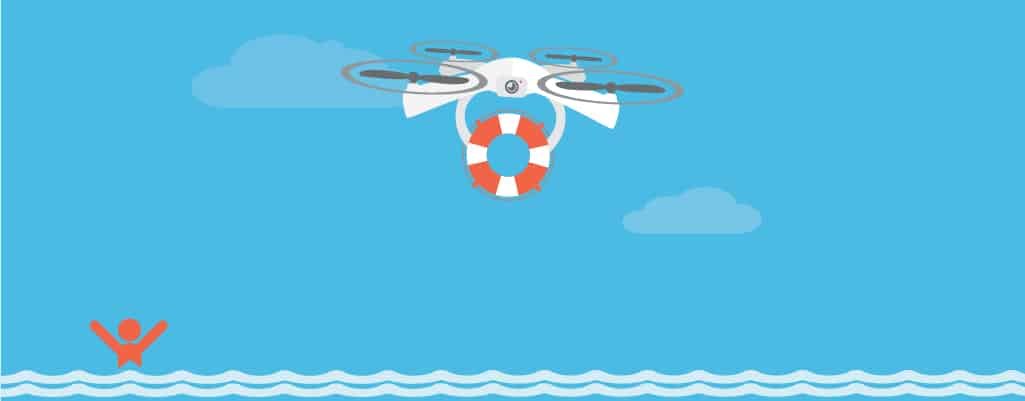
Drones can withstand harsh conditions, they’re often much faster than people, and they can fit into smaller spaces without the hassle of humans. These factors all make them the ideal candidates to help in search and rescue missions.
The use of drones to find missing people can often save lives. If the missing person is trapped in freezing temperatures somewhere difficult to find them, drones will be able to spot them much quicker than a team of humans.
A drone will also be able to plunge itself into the freezing temperatures without risking its life or suffering painful injuries such as frostbite.
An example of drones being used for search and rescue is when 14 people were saved in China by a drone dropping emergency supplies into a collapsed building.
It makes sense that drones could be used to help search and rescue missing people, and this is definitely an advantage to the research and development into them.
Who knows, perhaps in the future we’d be able to see automatic drones searching for people without the need for human controllers at all. They might even be able to perform maintenance on other drones.
History Of Drones: Summary
That concludes our history into drones and the five ways that people are using them to change the world. Drones were first used in an attack on Venice but failed due to the lack of wings. Soon thereafter came a lot of trial and error during World War I, II, and the Cold War – without much success.
An attack on Syria showed the world how to use drones in the military effectively by using them as eyes rather than weapons.
Drones are now widely used in the military as well as commercially and recreationally, although there are split decisions on whether or not this is a good thing.
Whether you believe drones are beneficial or not, you cannot take away from the fact that drones are being used to change the world.
Deliveries are becoming faster and easier to acquire in emergencies, and wildlife biologists don’t have to risk their lives to get a good look at different species.
Robots are replacing bees and making weather predictions much more accurate, and search and rescue missions are becoming much more efficient and hopeful.
No doubt about it, there are bound to be many more ways that drones change the world in the future, so make sure to watch out for them. And perhaps you’ll even want to learn to fly a drone yourself!
- Best Camera Drone Under $300 (Complete Buying Guide) - June 12, 2021
- 16 Drone Maintenance Tips (Avoid An Early Drone Death!) - April 9, 2021
- Jamming A Drone Signal: Is It Legal And How To Do It - March 19, 2021
Leave a Reply